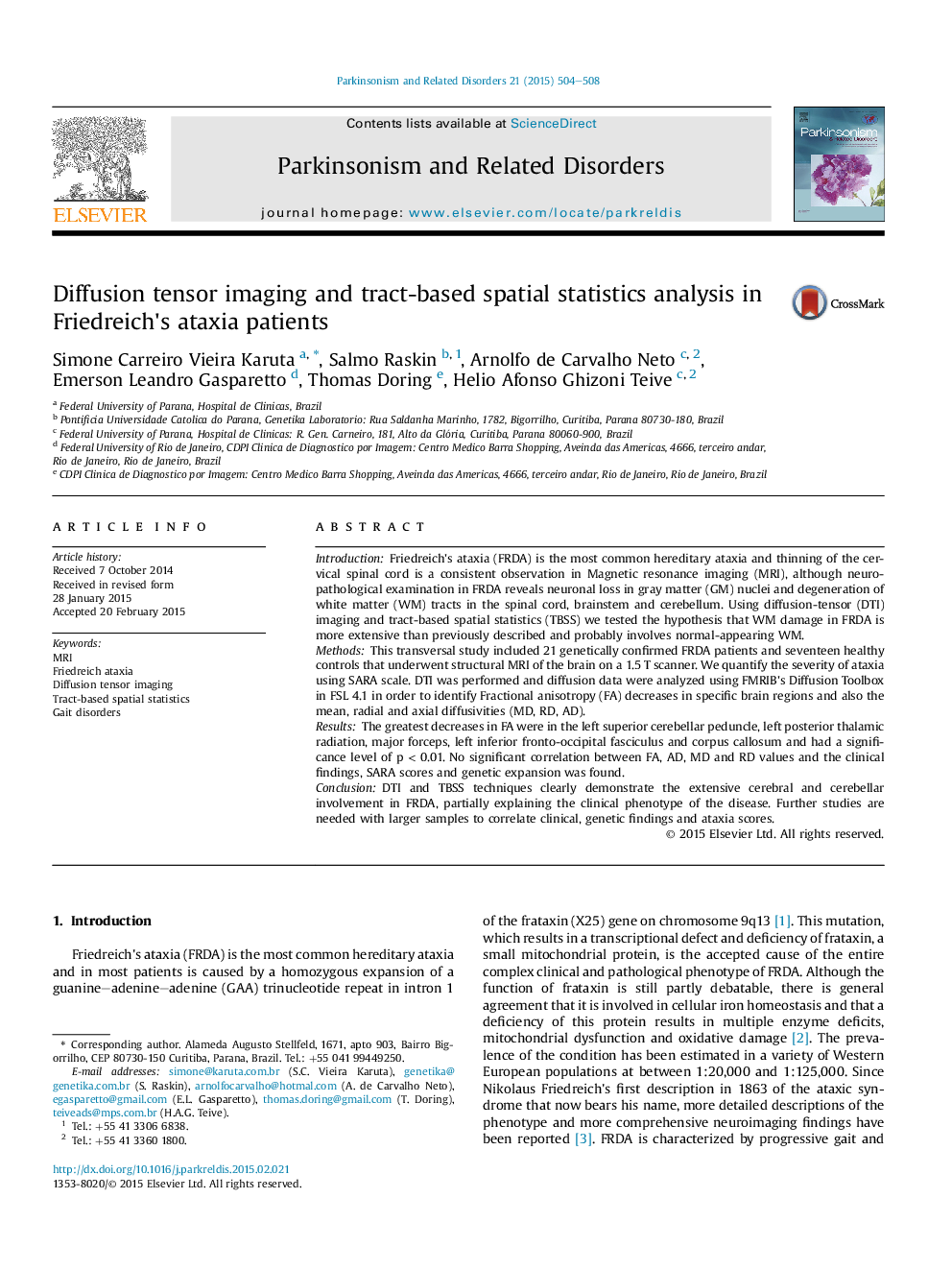| Article ID | Journal | Published Year | Pages | File Type |
|---|---|---|---|---|
| 1920436 | Parkinsonism & Related Disorders | 2015 | 5 Pages |
•We tested the hypothesis that WM damage in Friedreich's ataxia is more extensive than previously described using diffusion-tensor imaging and tract-based spatial statistics.•Greatest decreases in fractional anisotropy – left superior cerebellar peduncle, left posterior thalamic radiation, major forceps, left inferior fronto-occipital fasciculus and corpus callosum.•The Dentate Nucleus is linked to the regions affected in our FRDA patients suggesting an involvement of the cerebral-cerebellar circuit.•Abnormalities found in the fronto-occipital and longitudinal fasciculus – probably associated with the non-motor signs in FRDA patients.•Techniques can improve our knowledge of the pathophysiology of Friedreich's ataxia.
IntroductionFriedreich's ataxia (FRDA) is the most common hereditary ataxia and thinning of the cervical spinal cord is a consistent observation in Magnetic resonance imaging (MRI), although neuropathological examination in FRDA reveals neuronal loss in gray matter (GM) nuclei and degeneration of white matter (WM) tracts in the spinal cord, brainstem and cerebellum. Using diffusion-tensor (DTI) imaging and tract-based spatial statistics (TBSS) we tested the hypothesis that WM damage in FRDA is more extensive than previously described and probably involves normal-appearing WM.MethodsThis transversal study included 21 genetically confirmed FRDA patients and seventeen healthy controls that underwent structural MRI of the brain on a 1.5 T scanner. We quantify the severity of ataxia using SARA scale. DTI was performed and diffusion data were analyzed using FMRIB's Diffusion Toolbox in FSL 4.1 in order to identify Fractional anisotropy (FA) decreases in specific brain regions and also the mean, radial and axial diffusivities (MD, RD, AD).ResultsThe greatest decreases in FA were in the left superior cerebellar peduncle, left posterior thalamic radiation, major forceps, left inferior fronto-occipital fasciculus and corpus callosum and had a significance level of p < 0.01. No significant correlation between FA, AD, MD and RD values and the clinical findings, SARA scores and genetic expansion was found.ConclusionDTI and TBSS techniques clearly demonstrate the extensive cerebral and cerebellar involvement in FRDA, partially explaining the clinical phenotype of the disease. Further studies are needed with larger samples to correlate clinical, genetic findings and ataxia scores.
